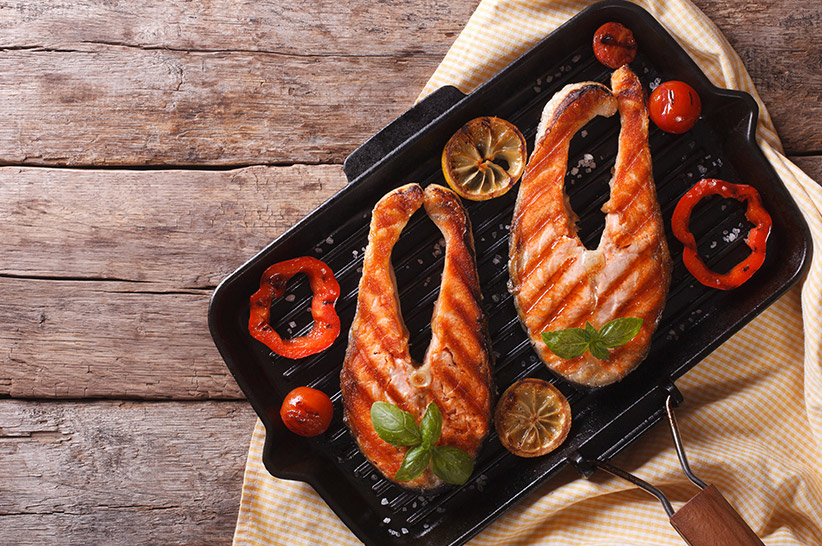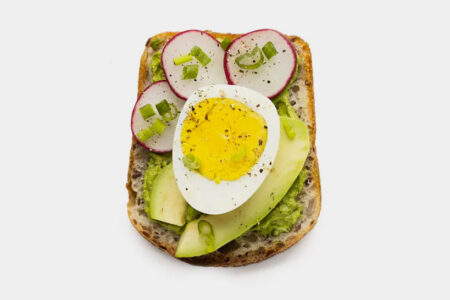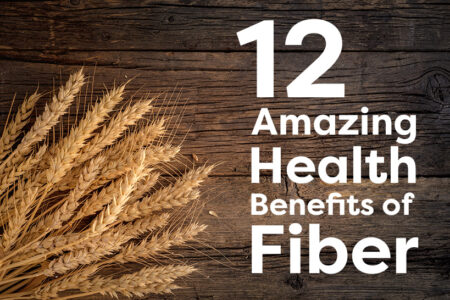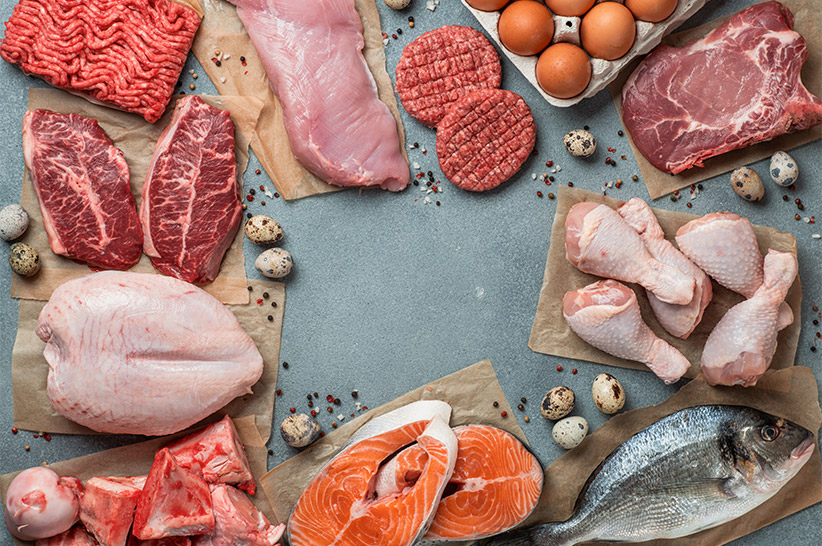The carnivore diet is the new talk of the diet town. It’s a simple meat and animal products only diet which means you cannot have any plant-based (fruits & vegetables) or carbohydrate foods.
It is also described as a high protein and low carb diet. Seasoned carnivore dieters who take it very seriously will only eat meat and drink only water. However, others include a bit of dairy (cheese and eggs) and coffee without sugar in their diet.
Although the carnivore diet has been rising in popularity lately, it’s been around for centuries, if not thousands of years. For example, Mongolian people consumed a large amount of meat and milk-based diet than fruits and vegetables 1.
What is the Carnivore Diet?
As stated earlier, the carnivore diet is a meat and animal products only diet that requires you to eliminate everything else. You’re not allowed to have any carbs or plant-based foods whatsoever.
The simple protocol of this diet is that you only eat meat and animal-based products and drink water. Eggs, cheese, and heavy cream are also allowed. People who love their cuppa more than anything else are allowed to have it moderately without sugar.
Even though this diet has existed for centuries, it seems to have gotten a sudden rise in popularity after the claims of Shawn Baker who appeared on the Joe Rogan’s podcast.
Shawn Baker is a doctor, athlete, and an earnest advocate of the carnivore diet. He has a fast-growing YouTube channel dedicated to carnivore diet with over 19 000 followers the last time we looked at it.
He recently published his lab test results showing that his testosterone levels were lower which confused him a bit considering the fact he’s been on a high protein and low carb diet for years.
Upon further research, Dr. Shawn talks about a study that says high protein low carb diets were associated with lower resting testosterone level but goes higher during exercise (or when you need it). This might be useful for anyone who’s facing a similar situation on high protein diets.
A lot of people starting the carnivore diet often wonder and stress about the daily macros. Shawn advises not to focus on calorie or macros counting especially when you’re just starting.
He says your hunger level will vary depending on our body and circumstances such as weather, physical activity. Hence, he recommends eating until you’re satisfied.
For those who want a strict guideline on how much to eat per day, Shawn Baker recommends a minimum of 2 pounds of meat and animal-based products per day for males and 1-1.5 pounds per day for females as a guideline for beginners.
Benefits of Carnivore Diet
Carnivore diet seems to offer similar health benefits to the ketogenic diet but at a much faster and higher rate according to all those who’ve experienced it.
Here are some of the popularly known benefits of carnivore diet:
Mental clarity
Similar to the ketogenic diet, increased mental clarity is something that’s always heard in the carnivore diet community. They say the carnivore diet allows them to think and act clearly than before. This may be because high protein diets have been proven to improve brain functions.
A lot of studies on high protein diets support the claim that it improves cognitive function. For example, a 2011 study was conducted on 23 healthy males (aged 19-31 years). They were all fed a usual protein diet for a week and then they were divided into two groups 4.
One group consumed a high protein diet, and one group consumed the usual protein diet for three weeks. They were also allowed to have monitored levels of other food and beverages.
The results from this study showed that the group that consumed high protein diet had improved reaction time and cognitive function than the usual protein group.
Increased energy
Again, any diet that lowers the intake of carbs and increases the consumption of protein has been shown to reduce fatigue and increase energy levels. This is perhaps why a lot of carnivore dieters are experiencing this benefit to a great extent.
Have you ever wondered why you’d often feel tired and exhausted after consuming a high carb meal, especially at lunchtime?
It’s because high carb food releases free tryptophan, a brain neurotransmitter associated with the fatigue and tiredness experienced after eating high carb food 5. Since the carnivore diet has almost zero carbs, it makes sense why a lot of people claim to have increased energy levels.

Relief from skin problems
Getting rid of skin problems is another widely circulating benefit of the carnivore diet. A lot of people are raving about their skin rashes, allergies, and skin conditions like eczema clearing up after being on the carnivore diet.
Rapid weight loss
People on the carnivore diet are experiencing faster weight loss, and that’s because protein has been known to make one fuller for longer and suppress appetite 2. Another reason is that any diet that lowers the intake of carbs always has a positive effect on weight loss.
For instance, in a 2007 study, moderately obese participants were divided into two groups. One group consumed a low carb diet with red meat and the other group consumed a low carb diet with poultry, fish, and shellfish (high in polyunsaturated fat) 3.
Their results (weight loss, nutritional intake, and plasma lipids) were evaluated after 28 days. The study found out that both groups had a significant weight loss. Despite the high consumption of fat, there were no significant changes in the cholesterol profiles of both groups.
This study also supports the weight loss claims behind the carnivore diet.
Simple and easy protocol
One thing that you’ll hear most carnivore dieters rave about is the simplicity of this diet. Your meal planning and cooking time are significantly reduced because of the limited amount of foods you can consume on this diet.
Although you may find it challenging to cut out all the options, in the beginning, you’ll also find it easier to prepare meat-based meals.

Carnivore vs. Keto
Carnivore diet is often referred to as the most advanced version of keto diet because it allows you to have protein and fat but cuts out the veggies.
Carnivore vs. Keto differences
Zero Carb
Keto diet generally allows you to have a maximum of 20 grams of carbs per day whereas the carnivore diet keeps it strictly zero. You’re not allowed to have any carbohydrate whatsoever on it.
High protein
Ketogenic diet requires you to keep the protein to a moderate level, and fat usually makes up 60-75% of the diet whereas the carnivore diet is primarily protein and a right balance of fat.
No greens
Some vegetables like broccoli, asparagus, Brussel sprouts, and avocados are encouraged on the keto diet and strictly not allowed on the carnivore diet.
You can, however, have a bit of greens in the beginning and slowly transition to the complete carnivore diet.
Restricted and advanced
As stated in the beginning, the carnivore diet is a limited and advanced version of keto. That said, it completely cuts out room for desserts (ice creams and snacks) whereas you can have keto ice creams, fat bombs, and snacks on the keto diet.
Ketosis is not the primary focus
Maintaining ketosis on a carnivore diet is possible. However, that’s not its primary focus. Your main focus will be to eat your way to a meat and water only diet.
Less on the macros and calories
People on the carnivore diet are not so concerned about counting calories or stressing about macros. You’re advised to eat until you’re completely satiated.
Carnivore vs. Keto similarities
High fat
Keto diet consists of high fat, and carnivore diet also requires you to maintain a healthy balance between protein and fat, so you’ll find that you might be able to maintain ketosis while on a carnivore diet.
Low Carb
Both the ketogenic diet and carnivore diets are focused on low to almost zero carbs.
How to Start a Carnivore Diet
STEP 1: Research and mental preparation.
Those who’re familiar with high fat and low carb or keto may find it easier to switch to the carnivore diet than those who’ve been on plant-based or whole food diets.

And it will undoubtedly be more challenging for those who’ve only been eating the traditional high carb diets.
Accept the fact that it is going to be a huge transition to go from eating multiple food types to only meat and certain animal-based products.
Do your research about all the options available and compare them to see what might work better for you.
If you’re a complete newbie to diets, perhaps you might want to start with the low carb and high fat and then to the ketogenic diet and slowly switch to a complete carnivore diet.
Give yourself at least a month on each diet type to see how your body works and adapts to each diet style.
Doing so will give your body enough time to get used to the fact you will not be able to eat carbs and sugary food anymore.
Depending on your health conditions, you may also want to do a thorough check up to make sure the carnivore diet will not have a negative impact on your health. It will also be useful when you compare yours before and after results.
STEP 2: Food shopping and stocking.
A huge bonus with the carnivore diet is that most meat and seafood items can be stored in the freezer for several months.
When you’ve done your research and have made up your mind that you want to go for it, it’s time to think about what kind of meat items you want to eat.
You do not have to force yourself to eat one variety of meat every day. Pick what you enjoy the most and what fits your wallet too because we all know how expensive meat shopping can be. You can eat all sorts of meat and seafood items from chicken, fish, steak, goat, and everything.
That said, try your best to buy organic meat products and make use of the seasonal offers to buy and stock them at discounted prices. If your budget doesn’t allow organic, it’s perfectly fine to buy whatever meat options you have available.
You’d also want to stock up on your choices of hot sauces, spices and herbs, and unsalted butter (preferably grass-fed).
You can also have a little bit of cheese and heavy cream every week.
STEP 3: Go easy on the daily macros.
You may find it more difficult to progress through the diet when you’re always worried about eating too much or too little calories.
This is something you’ll want to avoid especially at the beginning of your carnivore diet so that you don’t end up starving yourself by eating too little.
Listen to your body and eat when you’re hungry and until you’re not hungry anymore. This will help resist the temptation to cheat even when your favorite food item is staring at you in the face.
Depending on your height and weight, you may have to eat a couple of pounds of meat every day.
STEP 4: Keep it simple or exciting.
One day you might feel like some salt and pepper is all you need for your steak, and on another day you might want to marinate it in all kinds of seasonings for an hour or more before cooking it.
Some people cannot stand spicy food while some cannot imagine the thought of eating a roasted chicken with only salt and pepper.
And that’s completely okay. You decide how you want to enjoy your meat and cook it to suit your taste buds.
If you want it spicy, make it spicy. If you’re going to keep it simple, do that.
The bottom line here is that you should cook your food items in a way you’ll enjoy it, as long as you don’t add anything extra of course (flour, veggies, etc.).
STEP 5: Don’t forget the fat.
You have to eat a healthy balance of fatty and lean meat to make sure you’re getting plenty of fat as well. Eat chicken thighs with skin on, oily fish, and grilled meat with fat to maintain the fat balance.

STEP 6: Stay hydrated.
Drink plenty of water throughout the day to stay hydrated and to avoid the risk of constipation. Sip some water with Himalayan pink salt a couple of times throughout the day to maintain your electrolyte level.
STEP 7: Fiber cravings.
If you don’t like the idea of switching entirely to a meat only diet, you can have some greens like broccoli, spinach, asparagus, and Brussel sprouts in the beginning. This means you’re not completely on a carnivore diet yet, but you’re getting there.
You can slowly wean off from the veggies and go full meat mode.
STEP 8: Plan your meals.
If you’re a busy individual and/or go to work during the day, you might want to create a weekly meal planner to help you organize your meals. Meat cooking doesn’t necessarily require much planning or organizing, but it will help if you want to try out various recipes.
You can even include links to YouTube recipe videos on your weekly meal planner.
STEP 9: Find your CarniBuddy.
Join a forum dedicated to carnivore diet like this Reddit community, for example, to get your regular dose motivation to keep going. You will see be able to see other people’s testimonies, carnivore diet before and after photos, and you can ask questions and receive answers from seasoned dieters.
Perhaps you might want to join the popular 30 days challenge with others to get you moving through the diet in the beginning.
STEP 10: 60-90 days
Many people begin to see positive results within two weeks of starting the diet, but ideally, you should give yourself at least 60-90 days on the carnivore diet to see the real progress of your body.
It’s also during this time that you’ll also be able to figure out if you might be allergic to any of the other things you’re having like coffee, heavy cream, or cheese.
What can you eat on a Carnivore diet?
Here are the foods you can eat on a carnivore diet:
| Meat | Chicken, turkey, beef, pork, lamb, goat |
| Seafood | Fish (preferably salmon, sardines, and mackerel), crab, oyster, shrimp, and squid |
| Organ meat | Liver, kidneys, bone marrow, brain, and heart |
| Eggs | Preferably yolks only |
| Dairy | Butter and ghee |
Foods you can eat moderately:
- Heavy cream
- Hard cheese
Drinks
- Water
- Bone Broth
- Coffee without sugar and milk
- Tea without sugar and milk
You can drink tea and coffee without sugar. Some people drink it with artificial sweeteners without any issues. You can do that as well and cut it out when you’ve become adapted to the carnivore diet.
Foods to avoid on a Carnivore diet
Everything other than the listed food items above is a big no on a carnivore diet. You shouldn’t eat any plant or carbohydrate-based foods at all. Meat and water is the basic principle of this diet.
Here are some things to avoid:
- Alcohol
- Processed meat
- Sugar
- Fruits
- Vegetables
- Milk
- Sweets and chocolates
- Carbohydrate foods
- Ice cream
- Supplements
Carnivore Diet: Risks, Side Effects, and Prevention
Carnivore Diet Risks and Side Effects
The risks and side effects of this diet are much lower for those transitioning from keto or low carb diet than for those who are brand new to it. You’re also more likely to experience them at the beginning and a lot of the symptoms are similar to ketosis side effects.
- Fatigue
- Diarrhea
- Nausea
- A headache
- A sore throat
- Dry mouth
- Cramping
- Frequent urination
- Bad breath

Photo by Shutterstock.com
How to Minimize Side Effects
Fat vs. Protein balance
Maintain a balance between fatty and lean meat. For instance, you can eat more chicken thighs with the skin on than chicken breasts. And more brisket and fatty steak.
Eat more
As mentioned throughout this article, don’t worry about counting your calories or macros and end up under eating as it’s one of the causes of the side effects. Eat more meat until you’re satiated.
Electrolyte Boost
Since carnivore diet is diuretic, you’ll likely lose a lot of electrolytes in urine. This is why it’s important to eat more meat because it contains the potassium, sodium, and magnesium electrolytes you need.
You should also try to sip some warm water with pink Himalayan salt throughout the day. Bone broth is also a great choice to replenish your electrolytes. Most of the symptoms will fade away if you eat more and keep your electrolytes balanced.
Frequently Asked Questions FAQ
How do you get the vitamins on a carnivore diet?
Meat already has some vitamins and minerals. However, it is recommended to eat meat organs (liver, kidney,etc.) as they tend to contain more essential nutrients.
How often should you eat on a carnivore diet?
It depends but the majority of people on this diet eat one or two meals per day. Listen to your appetite and eat until you’re satiated.
Should you count calories or macros on the carnivore diet?
According to seasoned c.dieters like Shawn Baker, no, you don’t have to. You focus on eating until you’re full and that’s one of the benefits of this diet. The focus is to satisfy your appetite, so you don’t fall prey for “cheat days.”
Conclusion
- You may find it harder to digest the fact that you cannot eat anything except meat and animal-based products on the carnivore diet. However, it’s worth trying because of its similarities to the ketogenic diet which has numerous proven health benefits.
- If you’re planning to start the diet, we strongly suggest to get a thorough health checkup first and start with the low carb or ketogenic diet and slowly switch to the carnivore diet. Keep your focus on eating until you’re satisfied rather than on the macros especially at the beginning of your diet.
- You can also combine keto and carnivore easily by adding more butter and consuming more animal fat. Don’t forget to maintain a healthy balance between the fat and protein intake if and when you start the diet.
- Although the carnivore diet seems to have a lot of positive testimonials day by day and works similarly to the ketogenic diet, we’ve to accept the fact that ketogenic diet presently has more clinical evidence than the carnivore diet. However, we can expect to see more studies on this diet shortly.










![Juicing for Weight Loss: Everything You Need to Know [Plus Recipes]](/wp-content/uploads/2019/08/Juicing-for-Weight-featured-image.jpg)









I am on Day 6 of the carnivore diet and live a highly active life ias i run 10km four times a week. My enerhy levels are up and i sweat a lot. My question is around weighloss- i havent lost any. Should i be worried?
Hi Tabisa! Since you’re only at day 6 of you diet, it’s probably too early to expect any noticeable weight loss. It’s a good idea to wait at least 2 weeks to see if your diet is working for you.
You forgot to mention the very important reasons for avoiding low-carb veggies.
Hi Slaviché, we appreciate you stopping by.
In response to your comment, low-carb veggies are avoided by those who do a carnivore diet for the following reasons:
One, their fiber content can cause excessive gas, bloating, and diarrhea. Unfortunately, some people cannot tolerate veggies, which makes a carnivore diet beneficial. Two, plants contain compounds called anti-nutrients that block the absorption of essential nutrients. Cruciferous veggies like broccoli, for example, have them. This is a topic that should be discussed in another article.
this is how its commonly discribed yeah, for a lot of individuals they still include alcohol or they go off the diet for a bit, the carnivore diet is usually 70% fat 30% protein,shawn baker also says to eat meat like its your job as meat can sometimes be to satiating
What seasonings, condiments and marinades are people using? I thought that the only thing “allowed” on carnivore was salt.